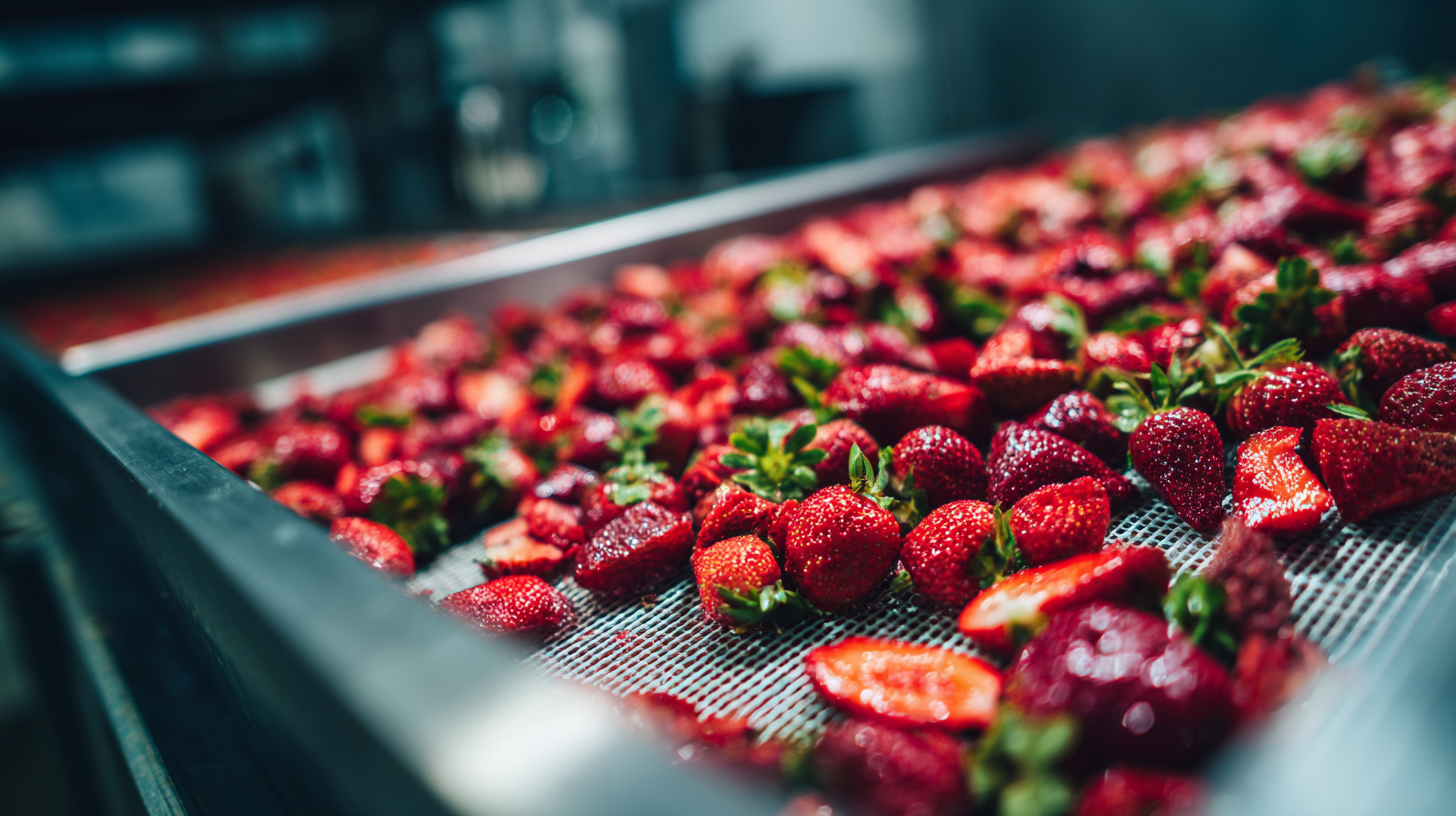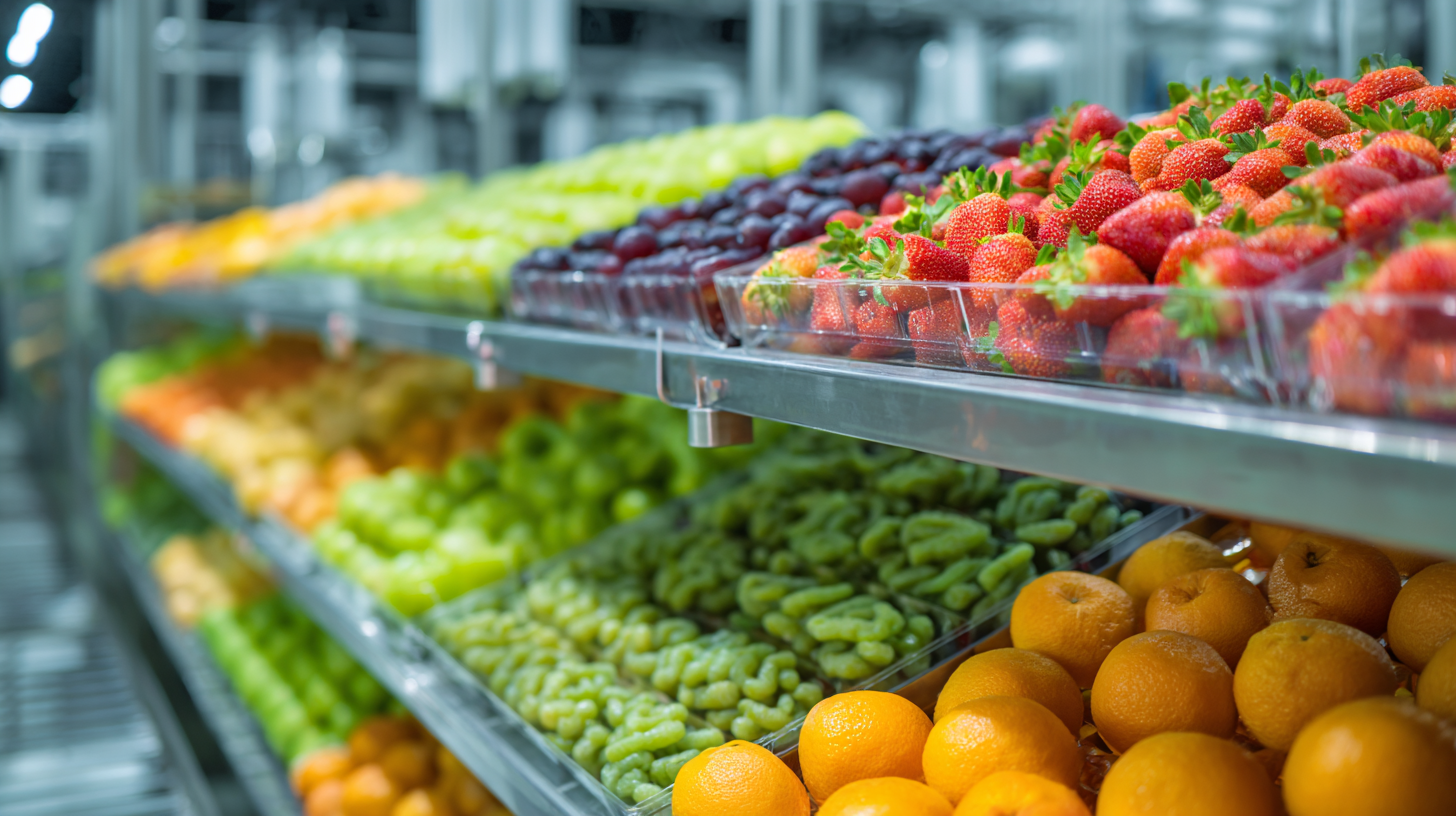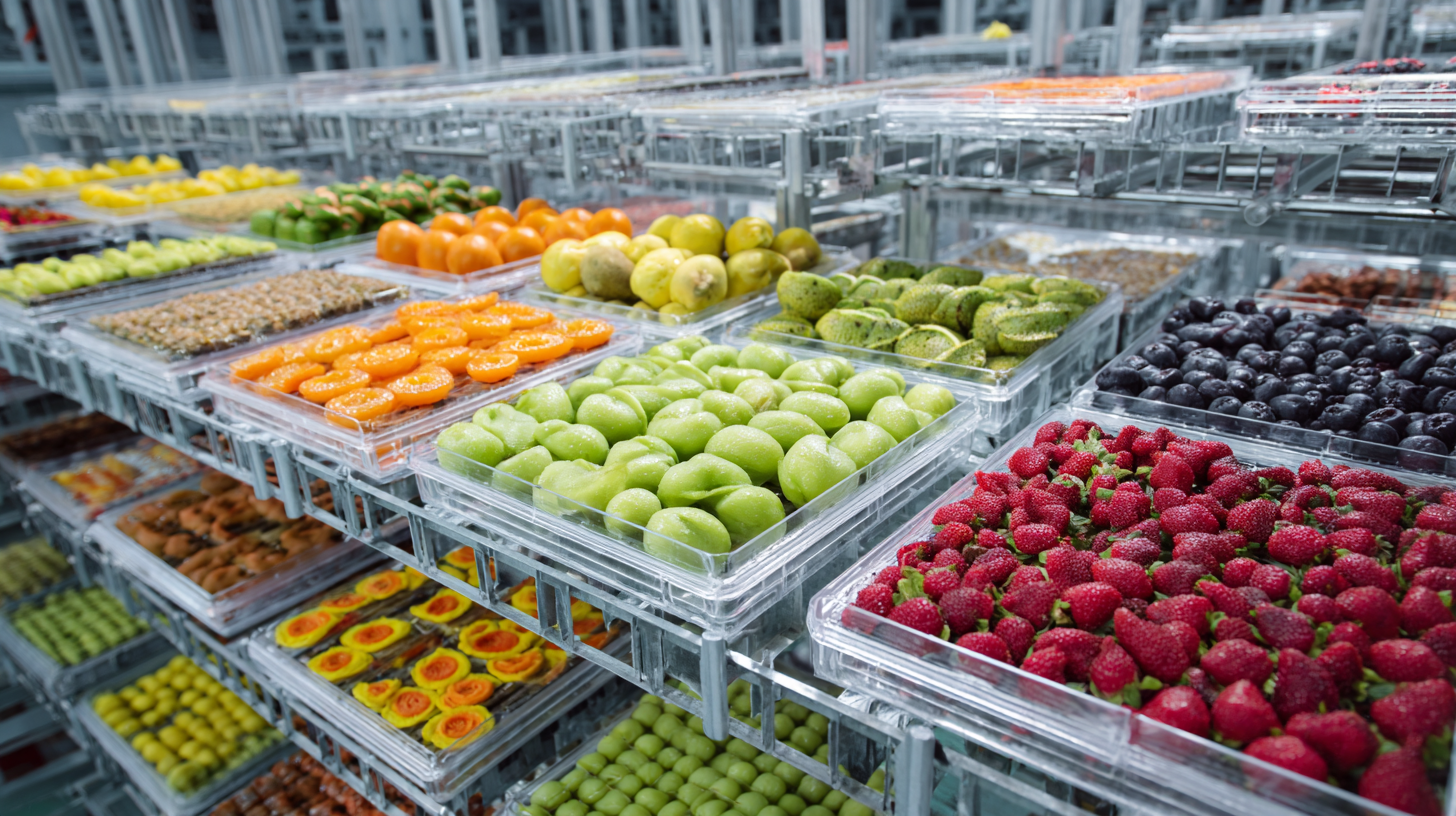Leave Your Message
In the rapidly evolving landscape of consumer technology, the demand for efficient and sustainable kitchen appliances is on the rise, particularly in the fruit processing sector. According to a 2023 report by Market Research Future, the global food drying market is projected to grow at a CAGR of 7.1% from 2021 to 2028, underscoring the increasing interest in home food preservation methods. This surge in demand has spotlighted the importance of high-quality Fruit Dryers, as consumers look for ways to maintain the nutritional value of fruits while enhancing their shelf life. As we explore the technology trends shaping 2025 for global buyers, we will delve into the innovations and features that define the next generation of Fruit Dryers, ensuring that they meet the needs of health-conscious consumers and align with the trend of sustainable living.

As we look toward 2025, the landscape of fruit dryer technology is poised for significant transformation. Key innovations will focus on energy efficiency and advanced drying methods. With an increasing awareness of sustainable practices, manufacturers are developing models that utilize solar energy and other renewable resources, making fruit drying more eco-friendly. These innovations not only reduce carbon footprints but also lower operational costs for consumers and businesses alike.

Additionally, smart technology integration is becoming a hallmark of the next generation of fruit dryers. Wi-Fi and Bluetooth connectivity will allow users to monitor and control the drying process remotely via smartphone apps. Features such as customizable drying settings based on fruit type, moisture levels, and even weather conditions will cater to individual preferences, ensuring optimal results. Furthermore, advancements in sensor technology will enable real-time feedback, adjusting temperatures and time settings to prevent over-drying, which can compromise the quality of dried fruits. These emerging features signify a promising future for both home and commercial users seeking the best in fruit drying solutions.
The global demand for fruit dryers is projected to witness substantial growth by 2025, driven by increasing health consciousness among consumers and the popularity of dried fruits in various culinary applications. According to a report by Market Research Future, the fruit dryer market is expected to expand at a CAGR of 7.5% between 2020 and 2025, reaching a valuation of approximately $5 billion. This growth can be attributed to the rising trend of natural snacks and the promotion of fruits as a convenient source of nutrition.

Moreover, the evolving technological landscape is reshaping the fruit dryer market. Innovations such as solar drying and advanced heat pump technology are enhancing energy efficiency and reducing the environmental impact of fruit drying processes. A report by Grand View Research highlights that the demand for energy-efficient drying solutions is becoming a critical factor for global buyers, as sustainability becomes integral to the food processing industry. As a result, manufacturers are increasingly investing in research and development to meet these consumer preferences, which is expected to drive further growth in the market.
As the demand for eco-friendly products continues to rise, the fruit drying industry is adapting to sustainability practices that will shape the future models of fruit dryers. Consumers are increasingly aware of their environmental footprint, prompting manufacturers to explore innovative designs that utilize sustainable materials and energy-efficient technologies. In 2025, expect to see fruit dryers crafted from biodegradable materials that replace traditional plastics, thus reducing waste and pollution.
Moreover, the integration of renewable energy sources, like solar power, will revolutionize how fruit drying processes are conducted. These improvements not only support a greener ecosystem but also enhance the efficiency of the drying process. Advanced models will likely feature smart technology that optimizes electricity usage and extends the life cycle of the appliance. By prioritizing sustainable practices, manufacturers will not only cater to the global shift towards eco-conscious purchasing but also position themselves as leaders in an industry ripe for transformation.
| Feature | 2023 Performance | Projected 2025 Improvements | Sustainability Rating | Materials Used |
|---|---|---|---|---|
| Energy Efficiency | 85% | 90% | High | Recycled aluminum |
| Drying Time | 6 hours | 4 hours | Medium | Biodegradable plastics |
| Temperature Control | Digital | Smart adaptive | High | Glass and steel |
| User Interface | Basic | AI-assisted | High | Natural fibers |
| Waste Management | Minimal | Zero waste | Very High | Recycled materials |
As the global market for fruit and vegetable processing is projected to grow from approximately $36.99 billion in 2024 to $63.61 billion by 2033, with a CAGR of 6.2%, understanding consumer preferences in fruit dryers has become increasingly vital for manufacturers. By 2025, global buyers will prioritize energy efficiency, compact designs, and multifunctionality in their fruit dryers. As health consciousness continues to rise, consumers are looking for appliances that can preserve nutrients while being environmentally friendly.
To cater to these trends, manufacturers should focus on developing models that incorporate smart technology, allowing users to monitor and control the drying process via mobile applications. This convenience enhances user experience and aligns with the growing trend of smart home appliances. Furthermore, brands should consider the inclusion of customizable settings, allowing for various drying functions tailored to different types of fruits and vegetables.
**Tips**: When selecting a fruit dryer, potential buyers should look for units with stainless steel components for durability and better hygiene. It’s also beneficial to choose dryers with adjustable temperature settings to suit diverse drying needs. Lastly, ensure that the product has user-friendly controls to simplify operation, making the drying process efficient and enjoyable.
In the rapidly evolving landscape of the fruit dryer industry, regulatory standards play a crucial role in shaping operational practices and ensuring product safety. According to a report by Technavio, the global fruit drying equipment market is expected to grow by USD 1.2 billion from 2021 to 2025, spurred largely by compliance with stringent food safety regulations. These guidelines not only drive innovation in technology, but also emphasize the importance of adhering to safety protocols, impacting how manufacturers design and operate their fruit drying systems.
As buyers become increasingly aware of these regulatory frameworks, companies are compelled to align their products with standards established by organizations such as the Food and Drug Administration (FDA) and the European Food Safety Authority (EFSA). Market research from Mordor Intelligence indicates that compliance with these regulations not only enhances consumer trust but also opens up access to international markets, fostering growth for businesses focused on producing high-quality, safely dried fruits.
As we approach 2025, it is evident that understanding and navigating these regulatory standards will be paramount for global buyers and manufacturers alike, propelling the industry toward a more sustainable and compliant future.
